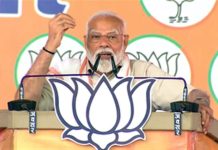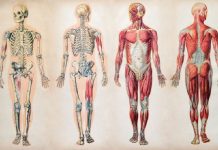[cycloneslider id=”pools”]
In the late 1980s when African runners burst onto the international athletics scene, winning almost every medal there was to be won, India’s sports administrators had a brainwave. Till date, India’s attempts at grooming Olympic medal-winning talent had foundered. Might it not, they thought, be a good idea to look for talent in “tribal, rural, coastal and hilly areas of the country and also from regions having genetic, geographic advantages”. The possibilities were tantalising.
The first target was obvious — the tiny community of Sidis, a tribe descended from African slaves who were brought to India a few centuries ago. This impoverished group had settled in pockets of Gujarat and Karnataka, eking out a living through subsistence farming and manual labour. Imagine their glee, when the creators of the Special Area Games (SAG) scheme, as this endeavour came to be known, arrived at their doorstep.
They had the potential to become great sportsmen, the Sidis were told. A few dozen of their children were selected and shipped off for training to Bengaluru and then, a few years later, to an SAG centre in Gandhinagar, Gujarat.
It was in this initial flush of enthusiasm that Jiji Thomson, now the head of the Sports Authority of India (SAI), started his career. This portly, jovial man, with a self-deprecating sense of humour (“Don’t you think I’m too obese for this job?” he asks) was then posted in Kerala.
In 1987, he’d helped Kerala host the National Games. It had been a last minute decision. The state lacked the infrastructure, but Thomson and his team managed to put it in place in less than a year and pull the games off. That brought him to the notice of Margaret Alva, the then Minister for Sports and Youth Affairs.
A few months after the games, Thomson got a phone call from her. Alva said she had Rs 25 lakh, at that time a considerable sum of money, remaining in her annual budget. She did not want it to go waste. Was there something Thomson could do with it?
Thomson, who’d heard of the Sidi experiment, was keen to harness Kerala’s native talent. The backwaters of Alleppey were home to generations of boatmen, largely from the Thiyya community. Apart from making a living off the water, they participated in the annual snake-boat races that were held on Punnamada lake. “We thought we could train them in rowing and canoeing,” says Thomson. And so the first SAG centre in Kerala was established.
“We had a premise that wasn’t based on research,” says Thomson candidly. “But I’ve seen tribal deer hunters in action in Odisha,” he ruminates, “they catch deer on foot, almost wrestling them to the ground – that’s how quick their reflexes are.” Or look at the rowing skills of the inhabitants of Nicobar, he continues. “Even if it (the experiment) held the slightest possibility of increasing our medals tally, I wanted to try it.”
Unfortunately, Thomson wasn’t able to stay long enough to see how his experiment fared. He was soon transferred to another department.
A quarter of a century later, Thomson, now in the evening of his career, has come a full circle. He has climbed the ranks of the administrative services, till, in early 2013, he was asked to lead the SAI.
On 6 May 2013, he finds himself standing at a podium at the end of large hall, shaped like a factory shed, which is the gymnasium of the SAG centre in Thalassery in northern Kerala. Groups of girls dressed in white, gold-edged saris sit on chairs arrayed along the walls.
In the middle, dominating the hall, are large practice mats on which teenagers, who are being trained in gymnastics, are putting on a demonstration — a whirligig of somersaults, pirouettes and handsprings, followed by flashier routines with balls and hula hoops.
Other children who are not performing sit in a large group on the side, while some peep in through the big windows, encouraging their colleagues, occasionally shouting bits of advice.
After the gymnasts it’s the turn of the fencers to thrust and parry in mock competition.
It’s the 23rd founding anniversary of this centre, perched at the edge of the Arabian Sea. All the local dignitaries have gathered for the occasion. A litany of speeches follows the demonstration. When his turn finally comes, Thomson takes the mike, wipes the sweat from his brow. “The Special Area Games and I go back a long way,” he reminisces, “I wanted to be here on this day.”
The SAG centre in Thalassery, one of the most successful in the country, was started in 1990. This town on the Malabar coast is the birthplace of the circus in India, and till a decade ago was the main source of artists for circuses around the country. According to Sreedharan Champad, a former trapeze artist, and now an advocate for the rights of circus performers and a writer of novels based on the circus, the town gave birth to 12 circuses. These include some of the best known in the country like Jumbo, Gemini, Great Rayman, Great Bombay and Rajkamal. The SAG centre here was established in the hope that these circus artists would make good gymnasts.
Around this time centres were being set up across the country in an effort to discover other hidden talent. In Imphal, it was hoped that the training most children received in Thang-Ta, a local martial art, would translate into fencing prowess. At Dhar in Madhya Pradesh, traditional tribal bow and arrow hunting might have embedded a talent for archery.
Today, there are 20 centres in India that are training 1,885 children in various sports ranging from football and hockey to handball and Taekwondo. The children are selected when they’re 12 years old and live, train and study in these centres usually till they’re 18.
“We started with 35 children from circus families,” says Arun Kumar Patil, the lean, serious gymnastics coach at Thalassery. Patil believes that these children have “inherent” abilities in gymnastics. “They were also taught basic movements at home from a very young age,” he says.
A 14-year-old boy, Abhinav P, who despite standing a little over four-and-a- half feet tall, had put on a remarkable display on the Roman rings at the anniversary celebrations, comes from one such circus family. His mother Sujatha did trampoline stunts at the Great Rayman Circus for 14 years, while her sister walked the tightrope. Abhinav, she says as they stand in the verandah of their house in a small village on the outskirts of Thalassery, has been doing handstands and acrobatics ever since she can remember. He’s picked it up on his own, she says. “Leave him alone for an hour in the house and you’ll find him practising”.
Even the guard at the SAG centre, a portly man with a ready smile, who doubles up as an assistant athletics coach, comes from the circus. Every morning, P Vishwanathan teaches some of the children, between the ages of six and 10, how to turn somersaults. He picks them up gently, flipping them over in slow motion, over and over till they get the hang of it.
He spent over three decades in the circus, doing every possible stunt over the course of his career. He stopped at the age of 42, when he was injured in an accident on the flying trapeze. During his years in the circus he travelled the world and, he boasts, was a stuntman in films like Rishi Kapoor’s Duniya Meri Jeb Mein and Dharmendra’s Jugnu.
Now his 15-year-old son is training in gymnastics at the SAG centre. But the training, he laments, is lackadaisical. “It lacks the rigour of the circus. My son is only going to achieve half his potential,” he says. Full-time trainees are only taken on at the age of 12, by which time, he says, it’s often too late for them to learn.
Paralleling the decline of the circus, children from a circus background too are now a minority at the centre. Things did not work out as planned. After the first few years, circus families started withdrawing their children, says Patil. Some needed them back to work in the circus. Not many won medals, and government support was erratic — the parents saw little prospect in gymnastics for their children.
But the sports administrators were not going to give up so soon. They looked to other sports. In 2000, they introduced fencing and volleyball at the centre.
This part of Kerala is known for kalaripayattu, a fierce and flamboyant martial art that combines the use of fearsome daggers, swords and spears with lightening fast reflexes and delicate footwork. It’s also where Jimmy George, India’s best-known volleyball player, captain of the country’s national team and player for many European clubs, came from. The sport, introduced by the British, has become very popular, says Thomson, and is played in virtually every village. Perhaps where the circus had failed to produce gymnasts, fencers and volleyball players might abound.
At the kalari (training area) of the Gurukula Kalari Sangham, a kalaripayattu institute near Thalassery, a group of loin-clothed men is going through their elaborate training routine. They start with basic leg exercises, followed by a sequence of body-contorting poses in the form of a ‘snake’, an ‘elephant’ and so on. Over the next hour they move on to weapons, and the clanging of wooden sticks fills the sheltered training pit. The session reaches a crescendo as swords and shields are brought out. Sparks light up the encroaching darkness, as the men jump high into the air, bringing their swords down on the prone shields. The movements are furious, everything happens in the blink of an eyelid.
Nearly everyone in the village has done kalaripayattu at some point in their lives, says Sailesh, head of the Gurukula. There are different exercises, training regimens and benefits for children, women and men. Aishwarya G Nair, 21, and Nisha Dominic, 23, two of the best fencers at the sag centre learnt kalaripayattu in their villages. Aishwarya says that it was at a kalaripayattu competition that her skills were first noticed by a fencing instructor. According to Sagar Lagu, the fencing coach at the sag centre, kalaripayattu has given the girls a definite edge. “It helps with their reflexes, footwork and hand movements,” he observes.
Fencing is the sport in which the SAG centre has had its most success, at the national level at least. According to Manikant Sharma, assistant director of the centre, they won 11 fencing medals last year. They haven’t had much international success though, and Sharma acknowledges that there is still a long way to go to match those standards.
This does not satisfy Jiji Thomson. He objects to the broadening of his experiment to include so many sports. It has led, he argues, to a dilution of the original purpose of the sag centres. Basketball and athletics were added to sag Thalassery even though it does not have the requisite infrastructure. “Every centre now has five or six different sports,” he says. “And too many centres have been set up.” The programme, he feels, is adrift. As for the Sidis they never really made a mark. The last Sidi athlete left SAG Gandhinagar in 2004.
“Perhaps,” says Thomson gloomily, “we were wrong about the genes.”
There is, however, a pause, a brief hesitation in his voice. As if, secretly, he still had hope that somewhere in India, out in the hinterlands, lies an undiscovered tribe of genetically gifted athletes who, with the right guidance from an SAG centre, will turn us into an Olympic success story. Now that would be vindication.
akshai@tehelka.com













